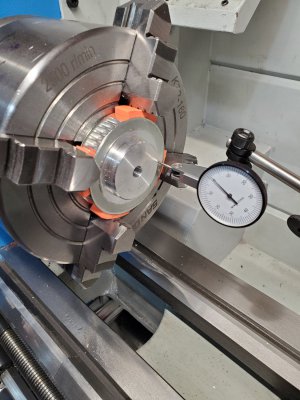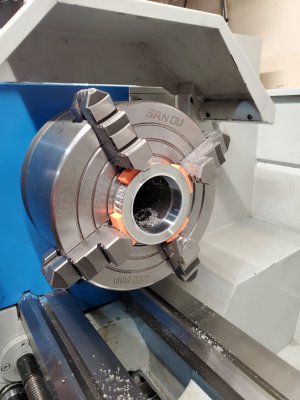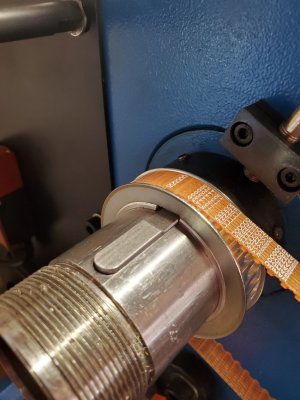In a 4 jaw chuck, the pulley can be made to run true regardless.Usually the flanges have runout
Plus they are pretty flimsy and might collapse
Taking light cuts it should be fine.
Sent from my SM-G781V using Tapatalk
In a 4 jaw chuck, the pulley can be made to run true regardless.Usually the flanges have runout
Plus they are pretty flimsy and might collapse
Why knock off the flanges!
Hold the gear by them!
Just leave them in place, keeps the belt from wondering.
Sent from my SM-G781V using Tapatalk
Another good idea (the superglue trick). I've used that in milling aluminum and wood.Clamping on the pulley teeth will not always square up the pulley. I would glue the pulley's to a piece of round stock (faced and turned) using super glue and than put the package in the 4 jaw chuck to get the hole on center. When done, boil the 2 parts in water for half an hour to separate the parts or put them in an ultrasonic bath and some acetone.
Clamping on the pulley teeth will not always square up the pulley. I would glue the pulley's to a piece of round stock (faced and turned) using super glue and than put the package in the 4 jaw chuck to get the hole on center. When done, boil the 2 parts in water for half an hour to separate the parts or put them in an ultrasonic bath and some acetone.


Even without a key, the encoder pulley will hold the torque to drive the encoder. Replace the long key by a short key and 3D print a filler to keep the key in place.I see two options.
- Attempt to broach the keyway thru the side of the flanges and the pulley. I suspect that broaching thru the flange may push the flange off. It's not the end of the world if I lose one or both flanges.
- The key for the shaft is quite large and constrains both the lathe motor v-belt pulley and this gear. The portion doing the v-belt has to handle a fair amount of power/torque. It doesn't need to be very large/strong for this timing gear (that only turns an encoder). I could grind the upper half of the key away (where it holds this gear) and make a shallow mating keyway in my gear. The other half of the key could remain full size for the motor pulley. In essence, I'd be grinding away about half the keyway for about half its length. Seems like this would still be plenty.

Thst likely will not work. Flanges are pressed on after the fact and I have yet to find one that runs true or even within 0.01 of true.Why knock off the flanges!
Hold the gear by them!
Just leave them in place, keeps the belt from wondering.
Sent from my SM-G781V using Tapatalk
